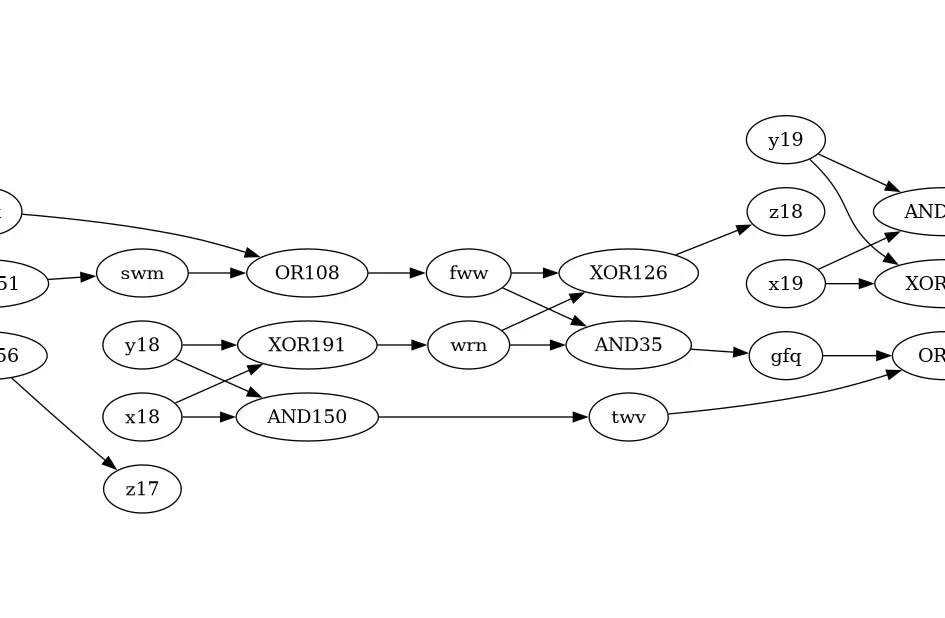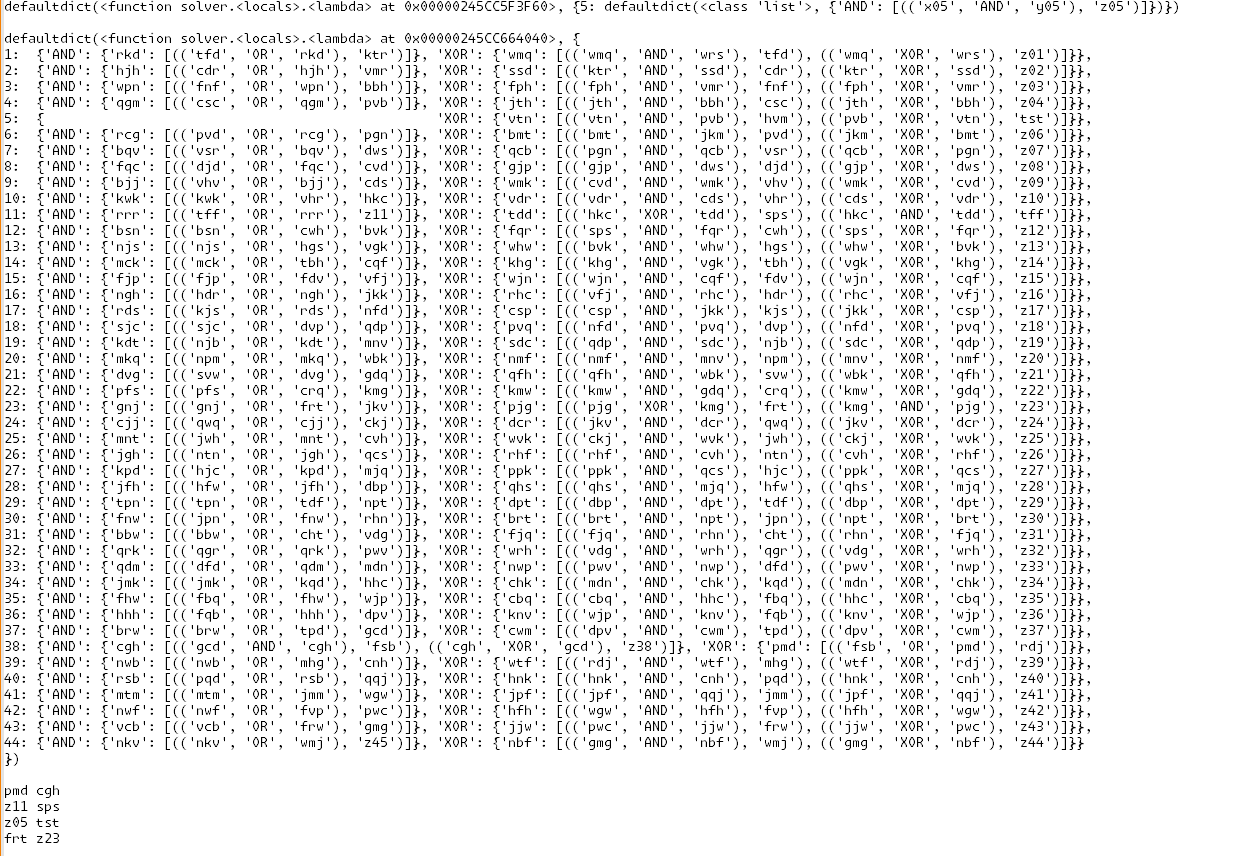Yeah - dumped out the input into GraphViz, and then inspected it 'by eye' to get the swaps. Nearly finished in the top 100 in the world, too. Feels like a really bad way to get the solution, though.
If you add eg. 1111 and 1111 and expect 11110, then you'll get an output like 11010 if there's a mistake in "bit 2". Can try all the swaps between x2 / y2 / z2 until you get the "right answer", and then continue. There's only about five different ops for each "bit" of the input, so trying all of them won't take too long.

